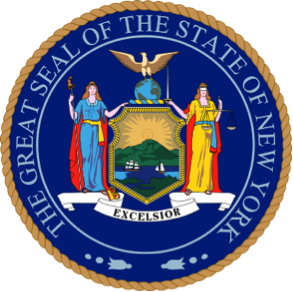Foiling Gary Johnson: Electoral Fusion in New York State

By: Jeremy Faulk
In New York, some Gary Johnson voters may be wondering what effect their vote will have.
By the time the last polling place closes on November 8th, 2016, we will have had an election cycle that has lasted more than 19 months, dating from Ted Cruz’s announcement of his candidacy way back on March 23, 2016. But of course, this overlong process is necessary so that we can arrive at and choose between our final two choices: Donald Trump and Hillary Clinton. The politically attentive will note that Libertarian candidate Gary Johnson and Green Party candidate Jill Stein are also contesting the election this year, and the truly politically astute won’t be surprised when they arrive to vote and find even more candidates on the ballot.
In New York, voters will have eight choices: Clinton, Trump, Johnson, Stein, Clinton, Trump, Johnson, and Clinton. No, that’s not a misprint. In Kentucky, we have a law that prohibits a candidate from appearing on a ballot more than once, but there is no such prohibition in New York. Clinton will appear three times, Trump and Johnson twice, and Stein just once.
What’s going on here? Several different political parties have nominated these candidates individually. Clinton has been nominated by the Democratic Party, the Working Families Party, and the Women’s Equality Party; Trump is the nominee for the Republicans and the Conservatives; Johnson is the Libertarian and is also listed as the nominee of the Independence Party; Stein is only the nominee of the Greens.
In addition to nominating the presidential and vice-presidential candidates, the parties in New York also nominate their Electors--the individuals who we vote for and who technically choose the President and Vice President on our behalf. New York law states that a vote cast for the candidates of a party are actually cast for the Electors of that party, and therein lies the issue that many in New York may be upset about after this election is over.
For the 2016 election, the parties that have nominated Trump (Republicans and Conservatives) have also nominated identical slates of the 29 Electors for New York. The three parties that nominated Clinton have done the same. When this situation occurs, the New York Board of Elections aggregates the vote totals from these different parties in what is typically termed “electoral fusion.” However, unlike Clinton and Trump, who have been nominated by several parties but with identical slates of Electors, Libertarian Gary Johnson’s two nominations have two completely different sets of Electors. Remember how in New York a vote for the candidate is a vote for his underlying Electors? Johnson voters will have the option to vote for the Libertarian slate or the Independence slate. There can be no electoral fusion for the Johnson votes because the slates of Electors are different. That is, Johnson voters will split their votes between two different sets of Electors depending on which Johnson voters select.
It is fully expected that Hillary Clinton will win in New York. FiveThirtyEight has her odds of winning the state at greater than 99%. The fact that Johnson voters might lose some of their clout in New York will likely not change the outcome of the election because, electoral fusion or not, Johnson is unlikely to have enough votes for either party that listed him as their nominee. But this process could, theoretically, make a difference in the future.
More importantly, the Libertarian Party will be eligible for federal matching contributions if the party receives 5% of the vote nationally. The CNN Poll of Polls has Gary Johnson polling at 5% nationally. If Johnson actually receives that level of support on Election Day, the Libertarians will receive upwards of $20 million to help fund their campaign in 2020. It is likely that only the votes for the New York Libertarian slate and not the votes for the Independence slate will count toward the Libertarian Party’s federal-matching-fund vote goal. The votes cast for Johnson on the Independence slate will probably spawn litigation if they are the final votes necessary to break that 5% threshold.
